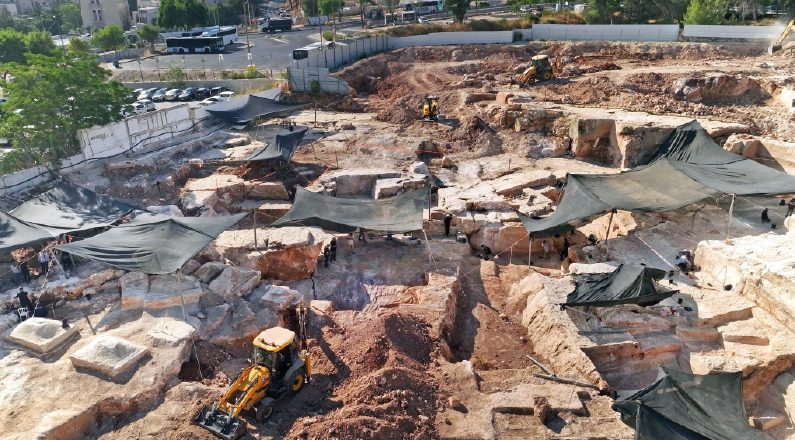In a groundbreaking archaeological discovery, ancient steps that have remained hidden for over 2,000 years have been unearthed in Jerusalem, connecting to the storied Pool of Siloam. These very stones, steeped in biblical history, are part of the streets Jesus is believed to have walked on nearly two millennia ago.
The Israel Antiquities Authority (IAA) made the announcement in a recent press release, revealing the significance of this excavation in Jerusalem’s Har Hotzvim district. Supported by the Biblical Archaeology Society (BAS), the discovery was made public on August 5, with the revelation sparking excitement among historians, religious scholars, and the general public alike.
The excavations revealed stone slabs that date back to the time of King Herod the Great, whose reign was marked by monumental building projects, including significant works around the Second Temple. These massive stones, each weighing around two and a half tons, formed the pavement of the Pilgrimage Road—a key pathway for Jewish pilgrims traveling to the Temple, as well as the site where Jesus famously healed a blind man at the Pool of Siloam.
Historical records date the Pool of Siloam back to around 2,700 years ago, constructed during the reign of King Hezekiah as part of Jerusalem’s vital water system. The pool played an essential role in the city’s infrastructure and religious life, and over the centuries, it saw multiple stages of construction and use. Despite its significance, the pool and its surrounding structures were eventually buried by debris and layers of newer construction, lying hidden for centuries.
The Pilgrimage Road, which is currently being carefully excavated, was once the bustling artery that connected the ancient Jewish Temple with the Pool of Siloam. Thousands of pilgrims walked this very path during religious festivals, and it’s believed that Jesus himself may have used this route during his time in Jerusalem.
The IAA has confirmed that the site will be opened to the public in the coming months, giving visitors a unique opportunity to walk in the footsteps of biblical figures. This highly anticipated reveal is expected to draw attention from pilgrims, tourists, and historians from around the world, eager to experience this rare intersection of history, faith, and archaeology.
For decades, archaeologists and researchers have worked to uncover the ancient secrets buried beneath Jerusalem, but few discoveries have captured the imagination quite like this one. With the unveiling of these ancient steps, a new chapter is being written in our understanding of the city’s rich past, offering a tangible connection to some of the most pivotal moments in religious history.
As the excavation continues, scholars are optimistic that further discoveries will emerge, offering even more insight into the city’s ancient infrastructure and the lives of those who once walked its streets. The Pool of Siloam and the Pilgrimage Road now stand as a testament to Jerusalem’s enduring significance, providing a physical link to the spiritual journeys of countless generations.
By Rafael Llanes | Zenit.org






